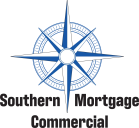A Debt Service Coverage Ratio (DSCR) Loan Program is a non-qualified mortgage (non-QM) designed for real estate investors to finance investment properties based on the property’s cash flow rather than the borrower’s personal income. These loans are ideal for purchasing or refinancing income-generating properties like rental homes, multifamily units, or short-term rentals, especially for borrowers who may not qualify for conventional loans due to irregular income or tax write-offs.
Income Verification: Qualification is based on the property’s Debt Service Coverage Ratio (DSCR), calculated as Net Operating Income (NOI) ÷ Total Debt Service (principal, interest, taxes, insurance, and HOA fees, if applicable). NOI is gross rental income minus operating expenses (e.g., property management, maintenance, but not loan payments).
DSCR Formula:
- DSCR = Annual Gross Rental Income ÷ Annual Debt Service (or monthly rent ÷ monthly PITIA). PITIA=principle, interest, taxes, insurance, home owner association dues.
- Example: A property with $50,000 annual rental income and $40,000 annual debt
service has a DSCR of 1.25 ($50,000 ÷ $40,000), meaning it generates 25% more income than needed to cover the loan.
Eligibility:
- Minimum DSCR: Typically 1.0–1.25 (some lenders accept as low as 0.75 with strong reserves or higher down payments). A DSCR ≥ 1.0 indicates the property’s income covers debt; < 1.0 means negative cash flow.
- Credit Score: Usually 620–680+ (higher scores may secure better terms).
- Loan-to-Value (LTV): Up to 80% (some lenders offer 85–90% with higher DSCR or reserves).
- Down Payment: 20–30% (varies by lender and property type).
- Reserves: 3–6 months of mortgage payments often required.
- Property Types: Single-family homes, 2–4 unit properties, condos, townhomes, or larger multifamily units (some lenders include short-term rentals like Airbnb).
- No personal income verification, tax returns, W-2s, or employment history required.

